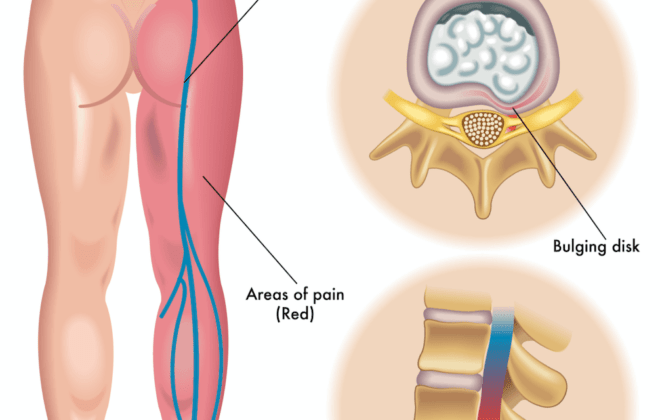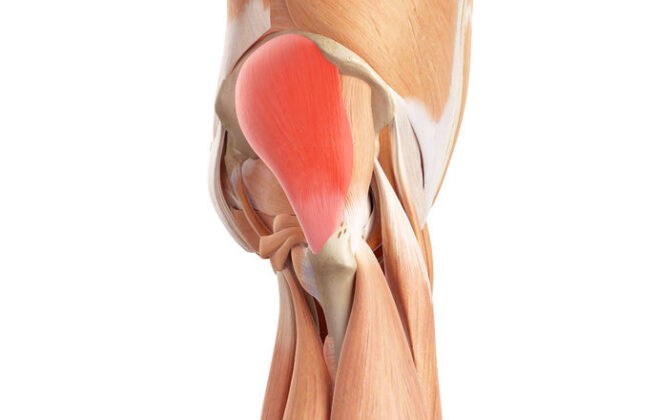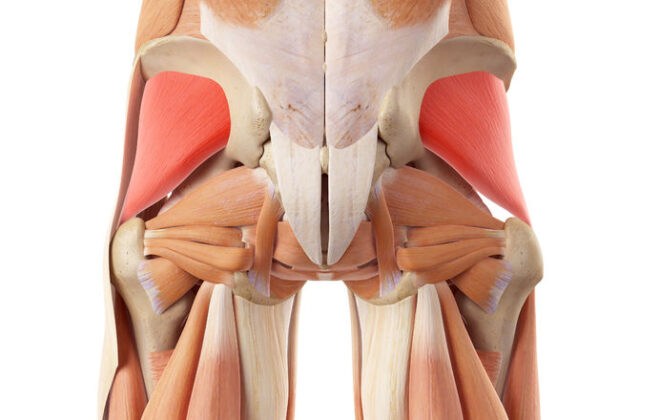Trigger Points In Gluteus Maximus | Find Them And Treat
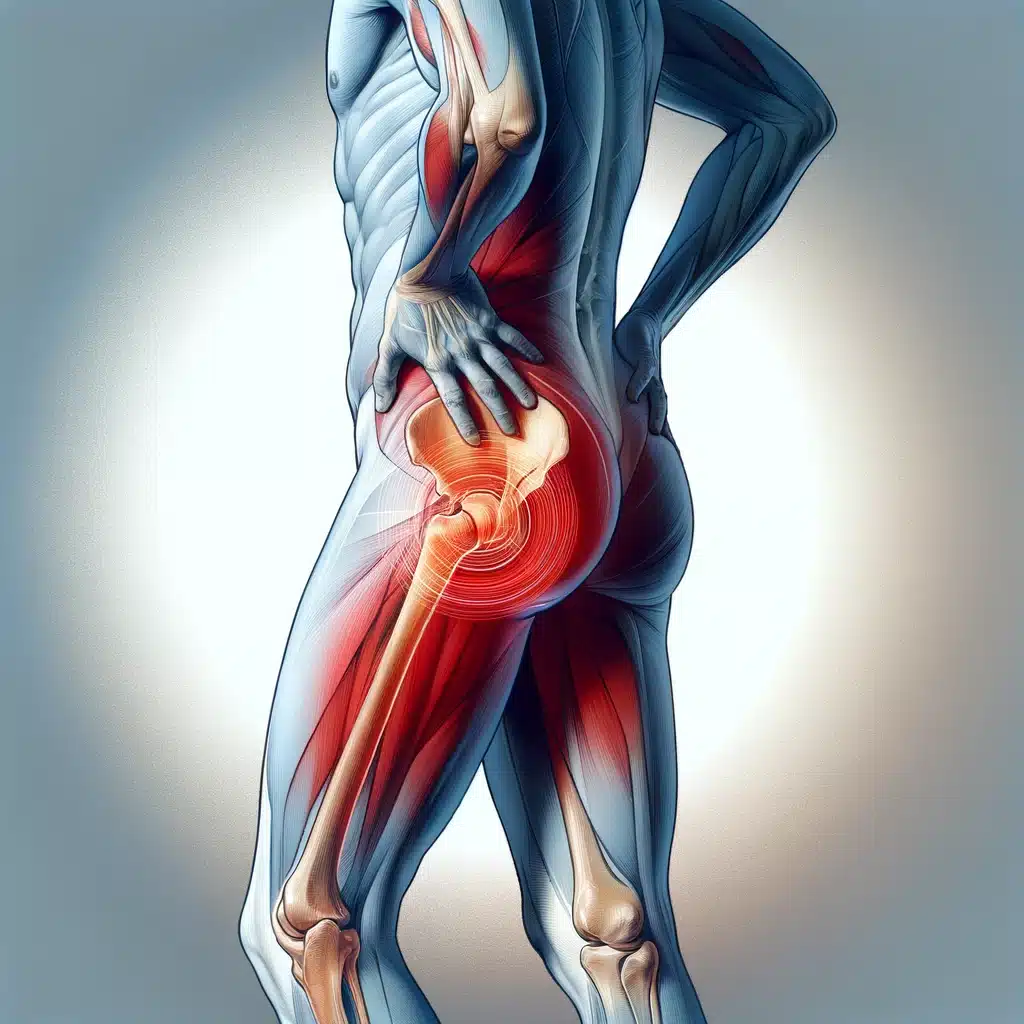
Are you feeling a nagging pain in your buttocks or lower back that doesn’t seem to go away? You might be dealing with trigger points in the gluteus maximus, those pesky knots that can cause discomfort and limit your movement.
The gluteus maximus is no small player when it comes to posture and mobility – it’s the powerhouse behind your ability to stand, walk, and climb.
It turns out that stretching isn’t just for warm-ups; regular stretches are crucial for tackling those troublesome trigger points. Through this blog post, we’ll guide you on how to pinpoint these hidden culprits of pain and provide proven strategies for effective relief.
You’re about to discover the path toward easing muscle tension and improving your day-to-day comfort.
Ready to conquer that discomfort? Let’s dive into finding and treating trigger points in the gluteus maximus!
Key Takeaways
- Trigger points in the gluteus maximus can cause severe discomfort but are treatable through stretches, massage techniques, and lifestyle changes.
- Identifying trigger points requires a careful approach using palpation, visual examination, and movements that may highlight muscle tension or knots.
- Neuromuscular therapy, stretching exercises like the piriformis stretch, figure-four stretch, and lunges can significantly alleviate pain from these muscle knots.
- Muscle Energy Techniques (MET) combine controlled muscle contractions with breathing patterns for effective pain relief and increased flexibility in the glutes.
- Lifestyle modifications such as maintaining good posture, staying active with low – impact exercise, managing stress effectively, and regular professional consultations play a vital role in managing gluteal pain.
Understanding Gluteus Maximus Trigger Points
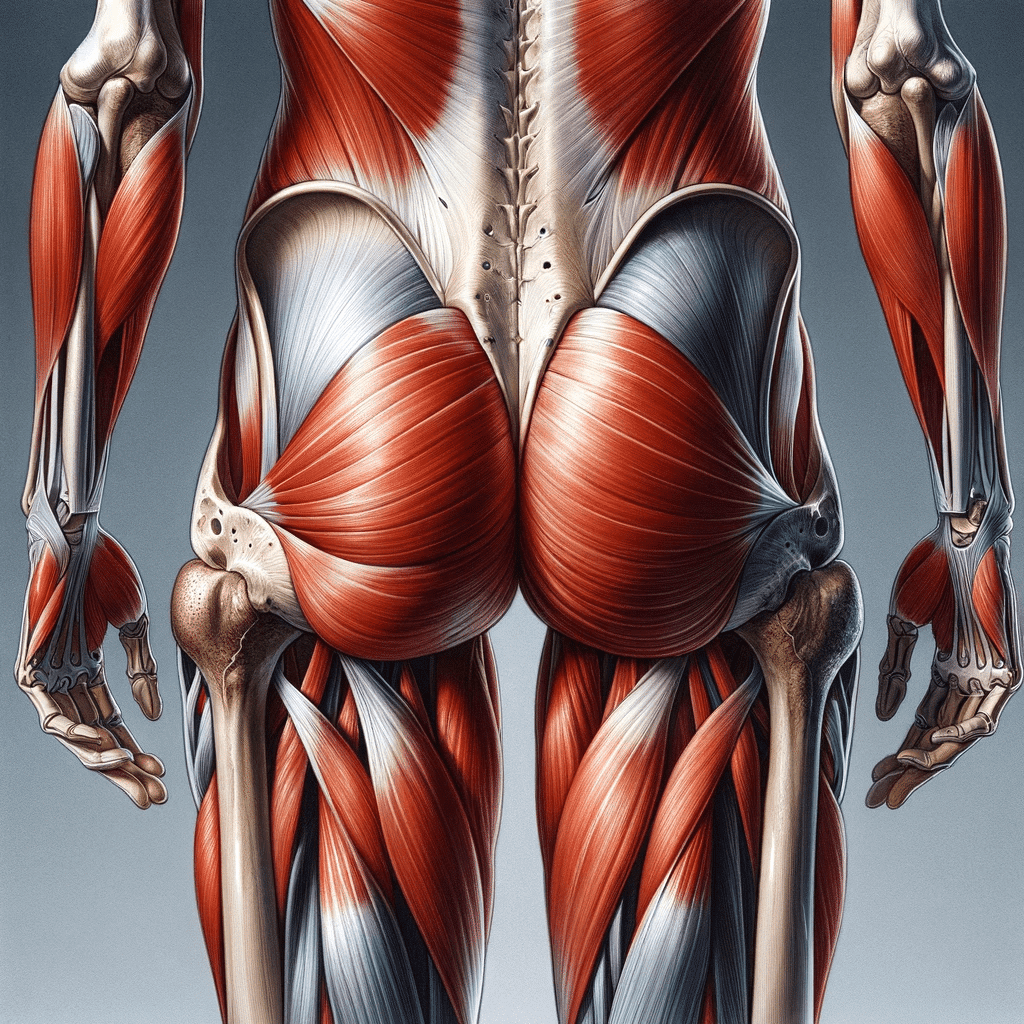
The gluteus maximus, a key player in your body’s movement and stability, can harbor trigger points—specific spots that cause pain and discomfort when pressed. These points may not only contribute to local soreness but often refer pain to other areas, impacting your overall well-being.
Symptoms and Related Pain Issues
Trigger points in the gluteus maximus muscle can lead to a range of uncomfortable symptoms. You might find yourself dealing with persistent pain in your buttocks, sacrum, or even the ischial tuberosity—the bone you sit on.
This discomfort may occasionally extend to lower back pain or create tension that affects the stability of your sacroiliac joint.
Addressing these issues often involves targeted stretches and massage techniques to relieve the tight bands of muscle responsible for your agony. Expect varying degrees of soreness as trigger points may radiate pain far from their actual location, sometimes misleading you to think the problem lies elsewhere in your body.
It’s essential to recognize these signs early and take action before they contribute to greater hip pain or chronic low back conditions.
Locations of Trigger Points that Cause Gluteal Pain
Discover the various origins of gluteal discomfort by exploring different trigger points, each with its unique pain patterns and effects on your mobility. Keep reading to understand how these points contribute to gluteal pain and what you can do about them.
Gluteus Maximus Trigger Points
The gluteus maximus, a large muscle in your buttocks, can develop sensitive areas known as trigger points. These spots may cause pain and tenderness that radiate to the sacrum and ischial tuberosity.
You might feel discomfort during activities like sitting or climbing stairs if these trigger points are active. Releasing them through targeted massage or stretching could provide significant relief, improving your mobility and comfort.
Experts have pinpointed common sites for these myofascial trigger points within the gluteal region. Implementing therapies such as neuromuscular treatments can ease the tension and support the sacroiliac joints more effectively.
Regularly addressing these trigger points ensures that your lower back remains supported by a relaxed and correctly functioning gluteus maximus muscle group, keeping chronic pain at bay and allowing you to move freely without discomfort.
Quadratus Lumborum Trigger Points
Quadratus lumborum trigger points often contribute to chronic low back pain, making them a key area of focus in myofascial therapy. These points can become very sensitive and may refer pain around the lower back, lateral hip, and even into the upper thigh region.
Identifying these triggers involves palpating the deep muscles located near the posterior iliac crest and addressing them can play a crucial role in alleviating lumbar discomfort.
Effective treatment typically incorporates techniques like neuromuscular therapy and specific stretching exercises to release tension within this thick muscle. Relief of these trigger points not only diminishes low back pain but also helps restore proper motion and function.
Moving on from the quadratus lumborum, let’s examine how gluteus medius trigger points can affect your well-being.
Gluteus Medius Trigger Points
The gluteus medius muscle plays a vital role in stabilizing your hips and moving your legs away from the body’s midline. However, when trigger points develop in this muscle, they can cause sharp pain and affect movement.
You might feel the discomfort around the side of your hip or even down your leg. These trigger points often produce pain that mimics sciatica or contributes to lower back issues because they are located near the sciatic nerve.
To tackle these pesky trigger points, targeted massage techniques can be particularly effective. Stretching regularly also provides relief by loosening tight muscle fibers responsible for irritation.
If you’re experiencing persistent pain on the side of your hip or if it radiates down your leg, consider consulting with a therapist skilled in pinpointing and treating these common culprits behind myofascial pain and dysfunction in the gluteal region.
Piriformis Trigger Points
Piriformis trigger points can spell trouble for your comfort and mobility. This sneaky muscle sits deep in the buttock area and when it gets grumpy, it can press on your sciatic nerve, causing a world of pain that people often mistake for sciatica.
Releasing these tricky spots requires precision—massage the piriformis directly with firm pressure or use targeted stretches to ease off tension.
Imagine finally finding relief from that nagging ache shooting down your leg; addressing these trigger points might be your ticket to smoother movement and better stability. Regular exercise tailored to strengthen and stretch the piriformis muscle ensures you keep those uncomfortable spasms at bay.
Keep active, stay limber, and show those pesky trigger points who’s boss!
Techniques to Identify Trigger Points in the Gluteus Maximus
Identifying trigger points in the gluteus maximus is essential for effective pain relief and muscle function restoration. Here’s how you can pinpoint these troublesome spots:
- Begin with a thorough visual examination of the gluteal region, looking for noticeable signs of tension or knots within the muscles.
- Apply gentle pressure using your fingertips across the gluteus maximus to detect any tender points or areas that produce referred pain.
- Use a gluteal trigger points chart as a guide to locate potential zones where trigger points commonly develop in this large muscle group.
- Engage in palpation, a technique involving pressing down on different parts of the muscle to find sensitive spots that may indicate the presence of trigger points.
- Perform movements that stretch the gluteal muscles; if certain positions increase discomfort or tightness, this may highlight underlying trigger points.
- Consider consulting with healthcare professionals like physiotherapists who can perform a manual search for these points using their expertise in anatomy and muscular patterns.
- Utilize tools such as foam rollers or balls designed for myofascial release to self-explore areas of stiffness and locate hidden trigger points within the muscle tissue.
- Note any specific symptoms such as unilaterally referred pain towards the sacrum or iliotibial band which are indicative of potential gluteus maximus trigger points.
- Observe changes in pain response after performing exercises recommended by experts like Stuart Hinds, which are aimed at targeting and alleviating trigger point tension.
- Pay attention to increased sacroiliac joint pain or discomfort around the buttock area during routine activities, suggesting that further investigation into possible trigger points is warranted.
Treatment Approaches for Gluteal Trigger Points
Discover effective strategies to alleviate discomfort from trigger points in your glutes, focusing on techniques that could transform your approach to muscle pain management.
Neuromuscular Therapy
Neuromuscular therapy zeroes in on those tricky spots in your gluteus maximus, where trigger points create pain and tightness. Using specific massage techniques, this hands-on treatment applies alternating levels of concentrated pressure to the areas of muscle spasm.
The targeted approach can help reduce discomfort and enhance muscle function. It’s all about giving tender attention to the precise parts of your muscle that hold tension for sacroiliac support.
Incorporating neuromuscular therapy into your routine might just be what you need if stretching alone isn’t cutting it. By methodically working through the layers of muscle tissue, therapists can reach those stubborn knots contributing to buttock pain and stiffness.
Remember how Dr. Perry detailed the importance of addressing these points for gluteal health? Well, consider neuromuscular therapy as a strategy to tackle them head-on – offering relief from some common causes of low back pain without relying solely on stretching or medication.
Stretching Techniques
After addressing trigger points with neuromuscular therapy, stretching techniques play a crucial role in maintaining muscle flexibility and reducing the tension that contributes to gluteal pain. Incorporating regular stretches into your routine can help prevent the recurrence of discomfort.
- Begin with the piriformis stretch, which targets tightness in both the piriformis and gluteus maximus muscles. Lie on your back, cross one leg over the other knee, and gently pull the uncrossed leg towards your chest until you feel a stretch.
- Try the seated figure – four stretch to further ease tension in your glutes. Sit with a straight back, cross one ankle over the opposite knee, and lean forward slightly while keeping your spine long.
- Engage in the supine hamstring stretch to relieve tightness that affects your gluteus maximus. Lie on your back with legs extended, then lift one leg up, holding behind the thigh or calf, keeping the lifted leg as straight as possible.
- Incorporate lunges into your daily activities to target multiple areas including your glutes. Stand tall, step forward with one foot and lower your hips until both knees are bent at a 90-degree angle.
- Perform hip flexor stretches since tight hip flexors can increase strain on the gluteal muscles. Kneel on one knee (with a cushion if needed), tuck your pelvis under and lean forward into your front leg while squeezing your glutes.
- Use foam rolling as an adjunct to stretching for trigger point therapy in the glutes; slowly roll back and forth across a foam roller placed under each part of the buttocks to massage away tension.
Muscle Energy Techniques
Muscle Energy Techniques (MET) are a form of manual therapy used to treat musculoskeletal problems, including those involving trigger points in the gluteus maximus. This approach combines controlled and targeted muscle contractions with breathing patterns to relieve pain and increase flexibility.
- Begin with your therapist guiding you into a precise position that specifically targets your gluteal trigger points.
- You’ll engage the affected muscle by gently contracting it against your therapist’s resistance for several seconds.
- As you breathe out, you relax the muscle, allowing the therapist to stretch it further, enhancing the release of tightness and tension.
- This contraction and stretching cycle may be repeated multiple times to gradually reduce stiffness and pain in the muscle.
- MET aims to restore normal muscle tone, improve circulation, and promote healing in the tissues surrounding trigger points.
- Your therapist will assess your response to each contraction and stretch, ensuring that each movement is within your comfort range.
- Consistent MET sessions can lead to improved alignment and function of the gluteus maximus, contributing to better sacroiliac support as noted by industry experts.
Lifestyle Modifications for Gluteal Pain Management
Managing gluteal pain often involves more than just exercises and treatments. To effectively control discomfort, incorporating lifestyle changes can be equally important. Here are some strategies to help manage the pain associated with trigger points in your glutes:
- Prioritize regular stretching: Including stretches that target the gluteus muscles can enhance flexibility and reduce tension caused by trigger points.
- Maintain good posture: Proper alignment while sitting and standing helps distribute weight evenly, easing stress on the gluteus maximus.
- Opt for ergonomic furniture: Chairs that support natural spine curvature prevent unnecessary strain on your back muscles, including the quadratus lumborum which affects gluteal comfort.
- Stay active with low-impact exercise: Swimming or cycling can strengthen gluteal muscles without overloading them, a key to avoiding the development of new trigger points.
- Use heat therapy wisely: Warm compresses can relax tight muscles and may ease pain from trigger points in the glutes.
- Manage stress effectively: Since muscle tension is often stress-related, techniques like meditation or yoga might reduce potential trigger point aggravations.
- Choose proper footwear: Shoes with adequate support can improve your gait, preventing undue pressure on your gluteus medius and neighboring muscles.
- Adopt a balanced diet: Nutritional choices impact muscle health; ensure you get enough magnesium and potassium to help muscle function.
- Break up prolonged sitting: Stand and walk around periodically if your job involves long hours at a desk to prevent muscle stiffness.
- Consult a professional regularly: Whether it’s physiotherapy or sports medicine expertise, regular check-ups allow you to stay ahead of any emerging issues with your back muscle health.
Conclusion
Unlock the comfort and mobility you deserve by understanding and addressing trigger points in your gluteus maximus. With a blend of targeted treatments like massage, stretching, and lifestyle adjustments, you can effectively alleviate pain.
Give your body the attention it needs to heal and maintain strength in this powerhouse muscle. Embrace these strategies for lasting relief from gluteal discomfort. Your journey toward better health starts with taking proactive steps today.
Sam Visnic
Most Popular Posts
Categories
- Deep Gluteal Pain Syndrome (8)
- Deltoids (2)
- Foam Rolling (2)
- Glutes (9)
- Hamstrings (5)
- Hypnosis for Pain (3)
- Lats (2)
- Levator Scapulae (4)
- Lifestyle (8)
- Massage Therapy (39)
- Mobility (21)
- Movement and Exercise (19)
- Muscles (22)
- Nutrition (2)
- Obliques (1)
- Pain (25)
- Pectorals (3)
- Piriformis (3)
- Plantar Fasciitis (11)
- Psoas (11)
- Quadratus Lumborum (3)
- Quadriceps (2)
- Rhomboids (3)
- Sciatica (1)
- Serratus Anterior (1)
- SI Joint (14)
- Sternocleidomastoid (1)
- Stretching (18)
- Subscapularis (1)
- TMJ (2)
- Trapezius (1)
- Uncategorized (12)

